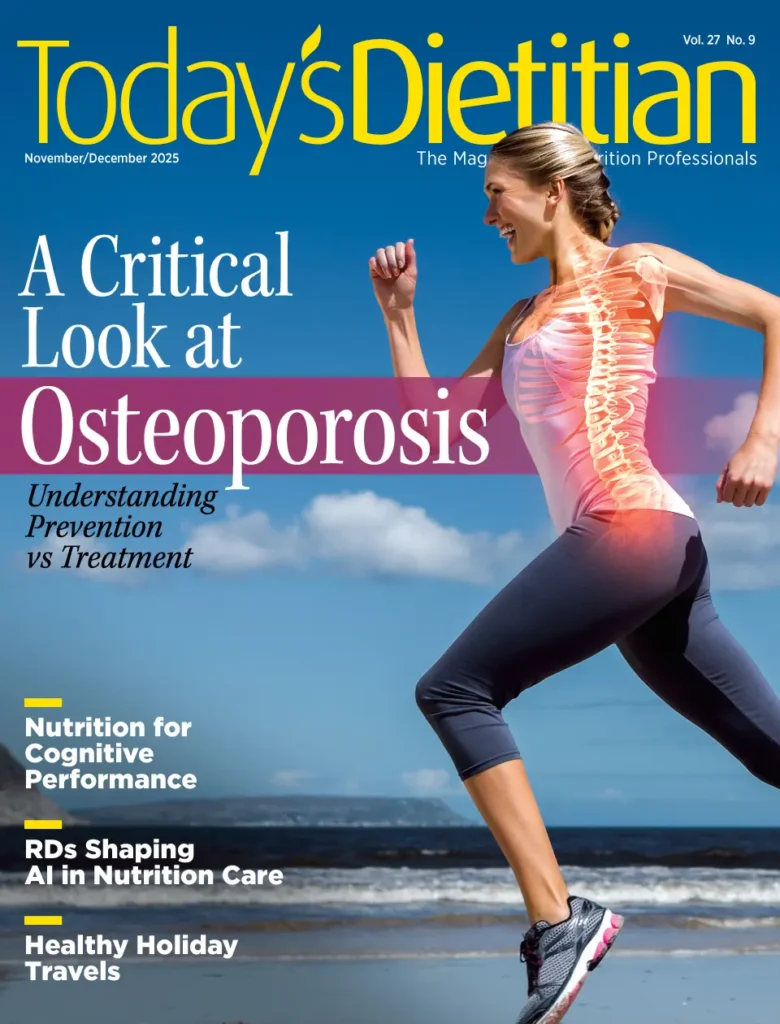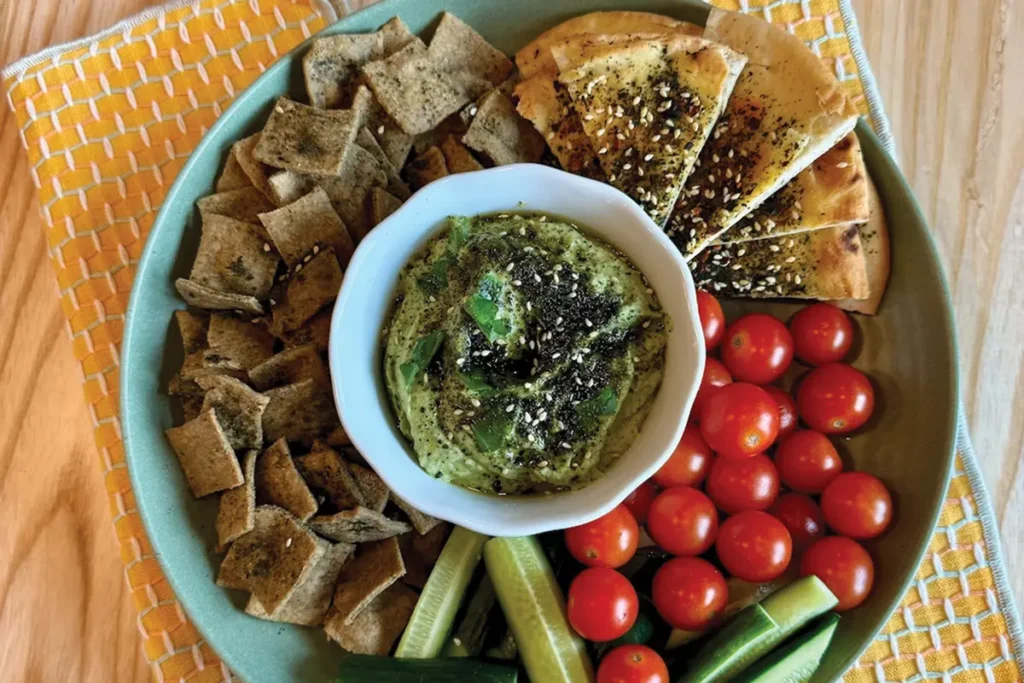Today’s Dietitian
Vol. 26 No. 9 P. 50
Widely consumed for millennia in coastal regions all over the world, sea vegetables are both nutrient-rich and environmentally sustainable, requiring minimal resources to grow and offering numerous benefits for the planet.
Sea vegetables belong to three different major categories—red (Rhodophyta), brown (Phaeophyta), and green (Chlorophyta)—and can be consumed in a variety of forms including dried, rehydrated, fresh, and gently steamed or blanched in rapidly boiling water.
Each category of seaweed has its unique benefits, so consuming a mix of sea vegetables is ideal. This helps to reduce the risk of excess iodine and heavy metal intake; since sea vegetables can also take up heavy metals from the environment.1 The team of RD experts from the nonprofit organization Food and Planet recommends serving sizes of 3 to 7 g dried sea vegetables and 9 to 21 g fresh or rehydrated sea vegetables and suggests consuming one serving once or twice per week. This provides the greatest health benefit while also reducing the risk of any kind of heavy metal toxicity.
Culinary Uses
Sea vegetables can be incorporated into all types of cuisines: smoked dulse strips make a great alternative to bacon; ribbons of kelp can be added to a soup in place of kale; dried seaweed flakes or powder can be used in baked goods, salad dressings, spice blends, and seed mixes; kombu can be added to soups and stocks, and added to liquid while cooking dried beans to help reduce gas formation; wakame can be rehydrated for a delicious seaweed salad; and pureed fresh kelp can be added to dips, sauces, and even smoothies. Don’t be afraid to start experimenting with seaweed in your kitchen in some of your favorite recipes to appreciate its versatility first-hand!
— Kristy Del Coro, MS, RDN, LDN, is a culinary nutritionist, consultant, and freelance food and health writer based in southern Maine. She’s cofounder of the Culinary Nutrition Collaborative, which offers culinary-focused nutrition education for health professionals. As a professionally trained chef and dietitian, Del Coro frequently shares her expertise in various media outlets and is passionate about promoting foods that are good for both human and environmental health. Follow her at on Instagram @kristydelcoro_rd.
References
1. MacArtain P, Gill CI, Brooks M, Campbell R, Rowland IR. Nutritional value of edible seaweeds. Nutr Rev. 2007;65(12 Pt 1):535-543.
2. Cherry P, Yadav S, Strain CR, et al. Prebiotics from seaweeds: an ocean of opportunity? Mar Drugs. 2019;17(6):327.
3. Cherry P, O’Hara C, Magee PJ, McSorley EM, Allsopp PJ. Risks and benefits of consuming edible seaweeds. Nutr Rev. 2019;77(5):307-329.
White Bean, Basil, Kelp, and Avocado Dip and Whole Wheat Kelp Crackers
Makes 8 servings
Ingredients
Whole Wheat Cracker
11/4 cups white whole wheat flour
2 tsp kelp powder
1 tsp fine sea salt
1/4 cup + 1 T extra virgin olive oil
1/2 cup water
Topping: sesame seeds mixed with equal part seaweed flakes such as kelp flakes or dulse flakes
Avocado Dip
1 15-oz can white cannellini beans, rinsed and drained
2 pureed kelp cubes (like Atlantic Sea Farms kelp cubes)
1/2 cup fresh basil
2 to 3 T fresh lemon juice
2 T extra virgin olive oil
1/4 large ripe avocado
1/2 tsp ground coriander
1/2 tsp fine sea salt
1 to 2 T water if needed
Ground black pepper to taste
Directions
1. Preheat oven to 375˚ F.
2. Combine all cracker ingredients except for topping mixture in a mixing bowl and gently knead until the dough can be formed into a smooth ball.
3. Roll out on lightly floured surface to 1/8″ thickness.
4. Cut into desired cracker shapes and place on parchment lined sheet tray, with about 1/2” space between each cracker.
5. Sprinkle each cracker with sesame seeds and seaweed flakes, gently pressing the seeds and flakes down into the dough.
6. Bake for 12 to 15 minutes until crispy. Cool on rack before serving.
7. For dip, combine all dip ingredients in food processor or high-speed blender and blend until smooth. Serve with crackers.
Nutrition Analysis per serving (2 T dip + 8 crackers)
Calories: 255; Total fat: 13.5 g; Sat fat: 2 g; Cholesterol: 0 mg; Sodium: 430 mg; Total carbohydrate: 29 g; Total sugars: 0 g; Dietary fiber: 6 g; Protein: 7 g



